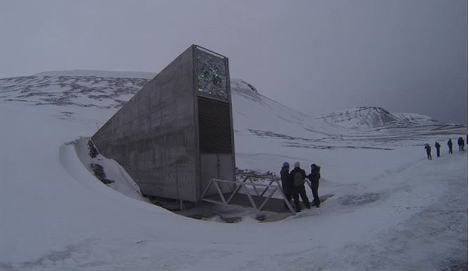SVALBARD
Brazil beans and Japan barley come to Svalbard
Over 20,000 crops originating from over 100 countries arrived in Svalbard on Wednesday to be put into the Svalbard Global Seed Vault (SGSV) in time for the its sixth anniversary.
Published: 26 February 2014 16:13 CET

The seeds are delivered the the Svalbard Global Seed Vault on Wednesday. Photo: Global Crop Diversity Trust
The samples included a university collection of barley from earthquake-rattled Japan; an untamed assortment of wild relatives of rice, maize and wheat; exotic red okra from Tennessee; and, from Brazil, a humble bean that launched a national cuisine.
The new delivery brings the total number of samples stored deep beneath the rock to 820,619, giving agricultural systems worldwide insurance against natural or manmade disasters.
The crops arrived on the tenth anniversary of the Global Crop Diversity Trust, which maintains the seed vault. along with the Norwegian government and the Nordic Genetic Resources Centre.
“We are particularly excited to be welcoming our first seed deposits from Japan, which has been very active globally in the preservation of a wide array of crop species,” Marie Haga, the Crop Trust’s executive director, said in a statement. “Each and every single deposit into the vault provides an option for the future."
The seed vault is a backup, housing duplicates of the living crop diversity collections kept in “genebanks” around the world.
Contributors to the seed bank in this delivery included: the Barley Germplasm Center of Okayama University in Japan; the CGIAR’s International Maize and Wheat Improvement Center (known by its Spanish-language acronym CIMMYT); the International Potato Center (known by its Spanish acronym CIP); the Australian Grains Genebank and Australian Tropical Crops Collection; the South Australian Research and Development Institute (SARDI); the Brazilian Agricultural Research Corporation (known as Embrapa); and the Seed Savers Exchange of the United States.
Url copied to clipboard!


 Please whitelist us to continue reading.
Please whitelist us to continue reading.
Member comments